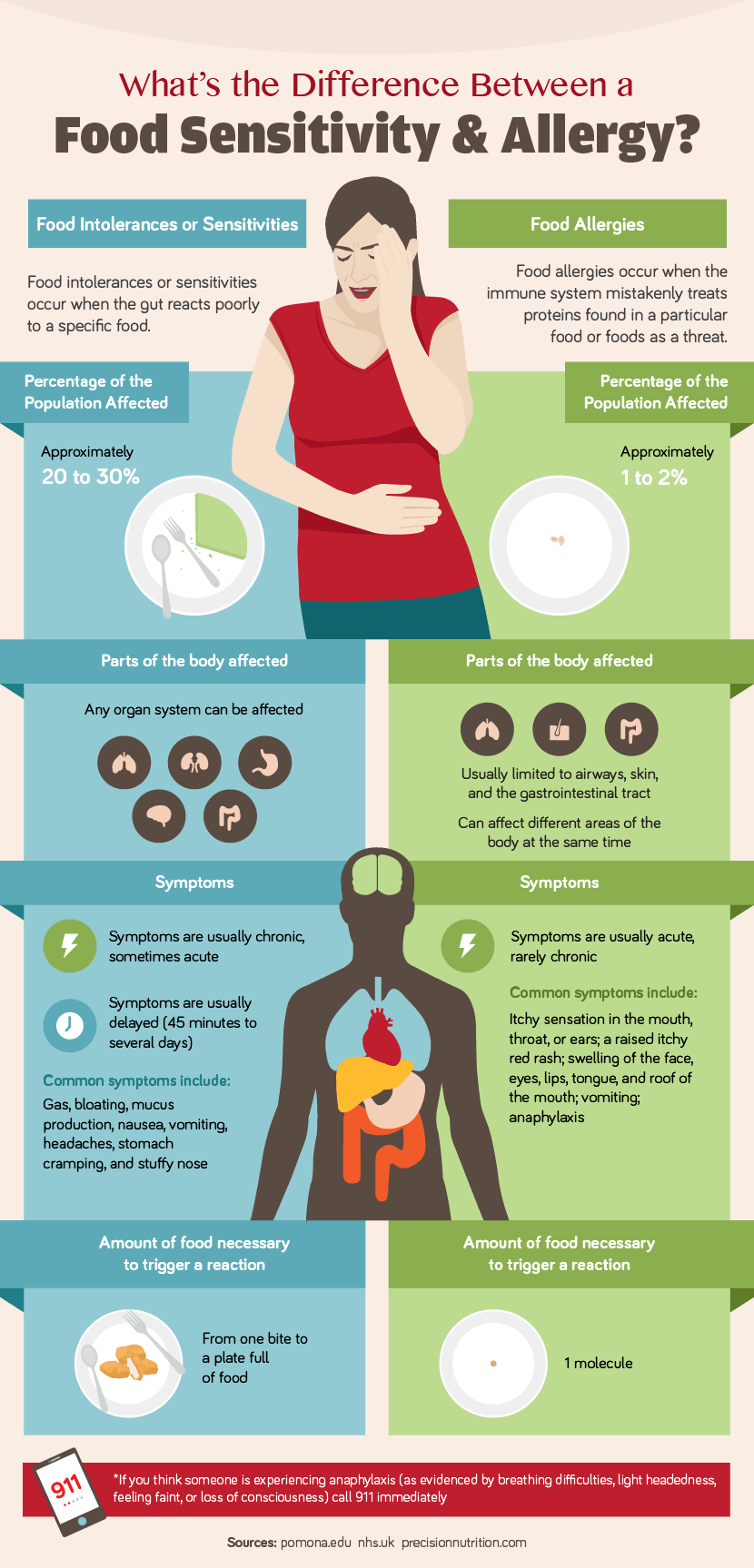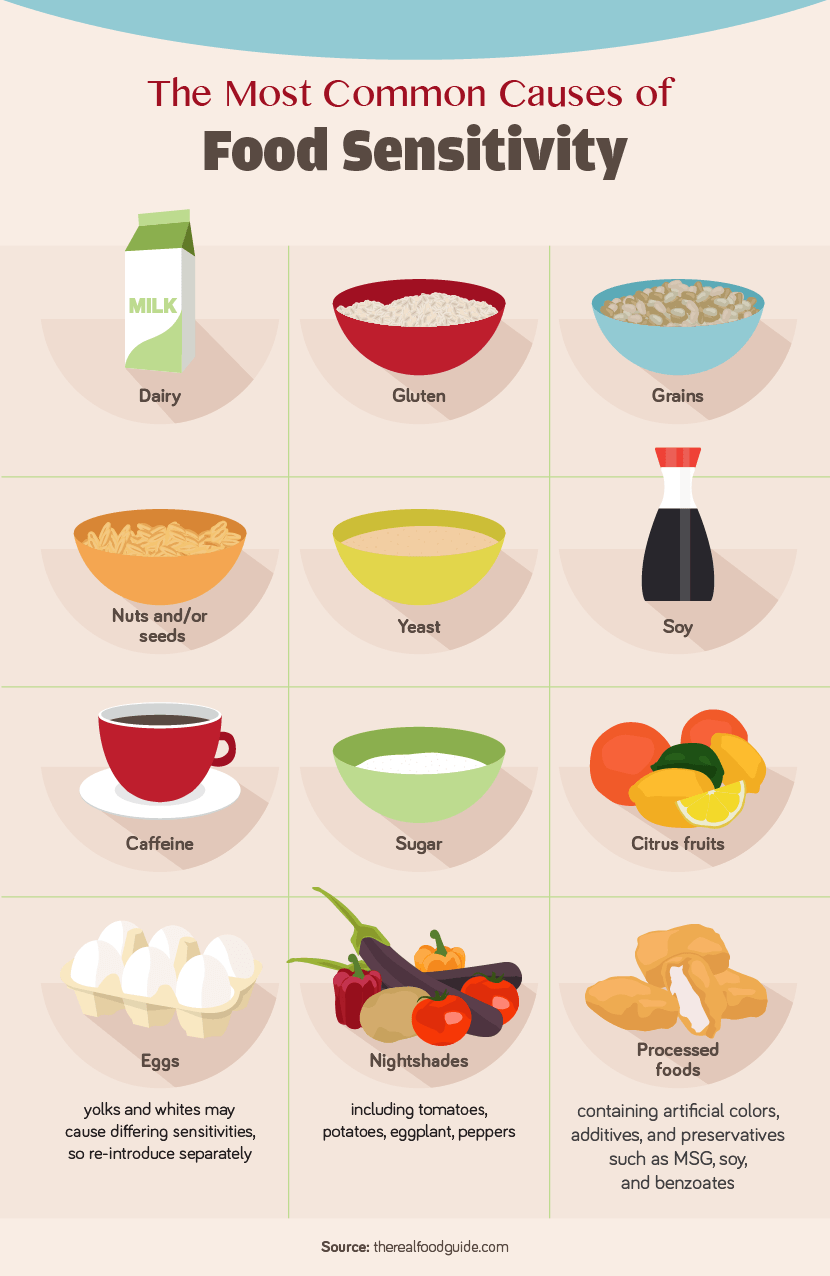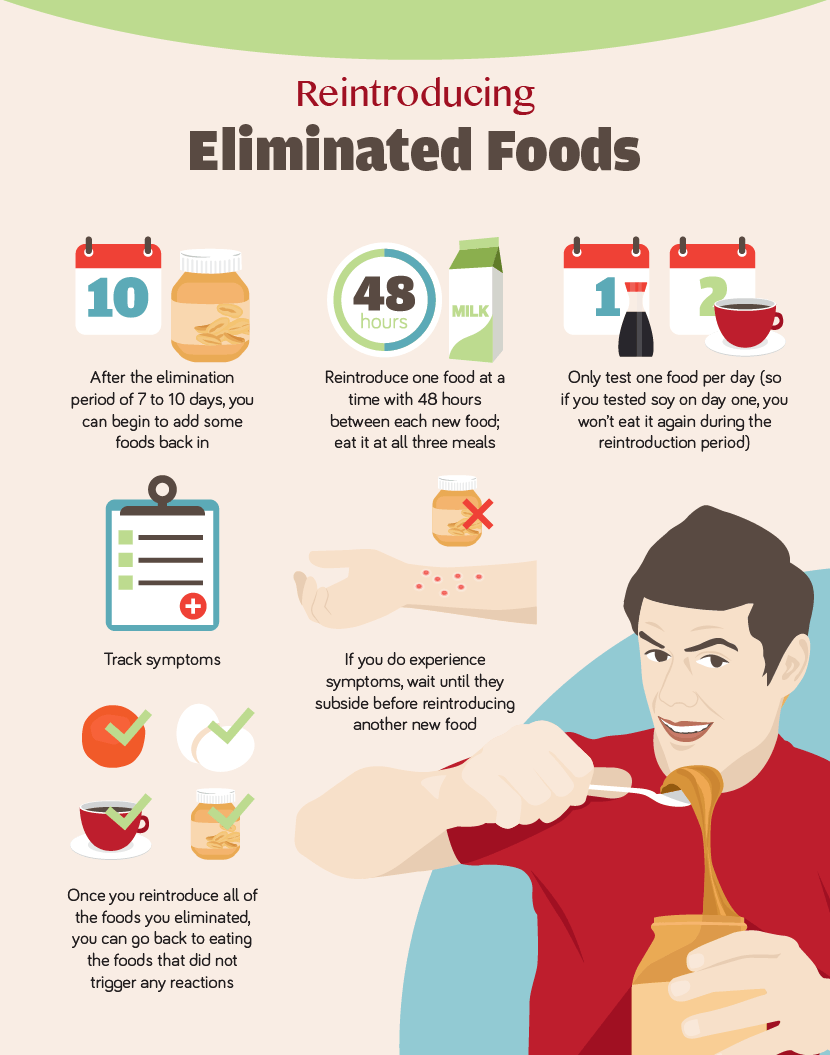Comprehensive Guide To Doing An Elimination Diet Correctly To Stop Inflammation
Last updated on
Most of us think of diets as a means to drop unwanted pounds. But what if there was a diet that allowed you to shed chronic health issues such as headaches, fatigue, irritable bowel syndrome, skin issues, and autoimmune diseases?1
That’s the rationale behind elimination diets, which are meant to identify food sensitivities, intolerances, and allergies so people are empowered to eat for their own personal wellness. Rather than focusing on weight loss, these diets are all about getting rid of inflammation-causing foods and optimizing overall health.
So how do these diets work, and are the benefits really worth giving up beloved food and drink such as dairy, pastries, or alcohol? Let’s find out.
How To Tell Between Food Sensitivity And An Allergy
How Does An Elimination Diet Work?
Here’s the basic premise behind elimination diets: More and more research indicates that a person’s gut is a strong indicator of their overall health.2 So if you regularly eat something that doesn’t agree with you and your gut is inflamed, it will translate to health issues.
Excessive Inflammation Leads To Leaky Gut Syndrome
If left unchecked, excessive inflammation in your digestive system can also lead to Leaky Gut Syndrome. This occurs when inflammation is so severe that it causes “intestinal permeability” – in other words, it wears tiny holes between the intestinal cells, allowing bacteria and other foreign particles to move into spaces where they don’t belong.3 Not unexpectedly, this can cause or exacerbate various health symptoms. Eliminate the triggers that upset your gut, and you can reduce inflammation and improve your health.
So how do you identify specific food allergies or sensitivities that trigger inflammation? This is where elimination diets come in. They can range from the very specific (eliminating gluten, for instance) to the very broad (cutting out all foods most commonly linked to intolerances – namely alcohol, dairy, eggs, gluten, nuts, soy, and added sugars). Some elimination diets are very restrictive and nix everything from ketchup to butter, coffee, pork, eggplant, tomatoes, peppers, and certain fruits.4
How Long To Practice Elimination
However strict the elimination diet, most last for at least two weeks and often more than three.5 Because it can take a while for various foods’ antibodies to completely leave your gut, you may not know whether you’re no longer affected by a food until you haven’t eaten it for several weeks or more.6
This also helps explain why some people experience relief immediately after starting an elimination diet, while others don’t see changes until after a few weeks. It all comes down to what the food is, how long it’s been affecting your body, and how intense its effects are.7
Once the elimination period is up, foods are reintroduced slowly to gauge whether symptoms reappear. Foods should always be reintroduced one at a time so it’s clear which (if any) provoke a reaction.8 Because foods can trigger health issues up to two days after being consumed, it’s important to space out these reintroductions over the course of a week or so.
Common Causes Of Food Sensitivity
Potential Benefits Of Elimination Diets
On the surface, giving up tons of foods in favor of a limited, painstakingly planned diet may not sound very appealing. But people are drawn to the many purported benefits of elimination diets, which include better immune function, clearer skin, healthier digestion (including less gas and bloating and healthier bowel movements), more energy, less fatigue, and improved mood.9
There’s even some evidence that reducing inflammation in the gut may help people cope with chronic illnesses such as diabetes and some autoimmune disorders.
Proper Meal Planning
It’s important to note here that you’re less likely to see health improvements from an elimination diet if you don’t take care to eat nutritious foods during the diet. As a result, going on an elimination diet requires meticulous meal planning.
You’ll need to ensure that you’re still eating proper nutrients vitamins, minerals, macro- and micronutrients, and so on despite cutting out certain foods.10
One of the best ways to do so is eating a variety of foods.11 This may seem antithetical to the very nature of elimination diets, but it is possible to eat a varied, healthy diet even while cutting out potential food triggers. If you’re not sure where to start, consult a medical professional and/or dietitian before embarking on an elimination diet.
How To Make Elimination Diets Work For You
While elimination diets can be well worth the effort if they turn up food sensitivities that are detrimental to your health, that doesn’t mean they’re a miracle cure for everything. In order to have realistic expectations and set yourself up for an effective elimination diet, it’s important to keep the following in mind.
- Do a full-symptom assessment before you start: In order to compare before and after, you need to be clear on what the before picture looks like.12 Prior to eliminating any foods, keep a symptom journal to jot down any chronic and occasional health complaints. In addition to identifying physical issues, such as constipation or allergies, also take note of your mood, mental clarity, and energy level. Once you develop this log, you can better determine if the elimination diet actually makes a difference.
- Be as mindful of what you eat as what you don’t eat: One of the biggest traps people fall into on an elimination diet is thinking that just because a certain food is “____-free,” it’s automatically healthy. But many times this is not the case. Read labels carefully and pay attention to what you eat, not just what you omit.13 This is essential to maintaining a healthy diet while eliminating certain foods.
- Know that you may feel worse before you feel better: While some people experience immediate relief when they go on an elimination diet, many others first suffer withdrawal symptoms.14 If you feel lousy when you start your diet, don’t just quit. Instead, stick it out to see if you feel better once the withdrawal symptoms subside.
- Remember that the items you eliminate can be found in more than food: If you want to see what it’s like for your body to be completely unexposed to a certain trigger, then you need to read the labels on absolutely everything that comes in contact with your body – and that means what goes on it in addition to inside of it. Shampoos and conditioners, for example, frequently contain gluten, while many body washes contain milk proteins.15Of course, body products may not make their way into your bloodstream or digestive tract, so it’s possible they won’t affect your gut in any way. But if you invest the time and effort to go on an elimination diet, you may as well add these items, too.
- You may be sensitive to multiple or highly specific foods: Elimination diets are particularly helpful for identifying broad food categories (such as dairy) that cause sensitivity. But unless you follow a highly restrictive elimination diet, they may not help you identify more specific food sensitivities. For example, one person may be sensitive to coconut oil, black pepper, kale, and strawberries. But an elimination diet may not be sufficient for identifying these issues.16 If you’ve gone through the process of an elimination diet and still have symptoms, it’s a good idea to consult a medical professional who may be able to help you pinpoint more specific allergies (usually via a blood test).
How To Reintroduce Eliminated Foods
- Just because you’re sensitive to a food now doesn’t mean you will be forever: Good news for anyone who’s just found out they can’t eat cheese or drink mimosas: Not all food sensitivities are permanent.17 Because our bodies, environments, health status, and stress levels continually change, the foods we are and are not sensitive to may also change over time. In addition, some people find they’re able to gradually reintroduce a food in modest quantities after the original inflammation clears. So don’t despair if you identify certain food sensitivities: There’s a chance you’ll live to eat that food another day. Just know that doing so will require paying plenty of attention to the signals your body sends. And if you’re in the unlucky category of people who have full-blown intolerances or allergies, then you may need to accept a life without certain foods.
- Your symptoms may not be food-related at all: It’s possible that you could go on an elimination diet and your symptoms won’t change.18 If this is the case, don’t give up on identifying what ails you. Instead, start trying to track all possible conditions that may contribute to the issue. For example, a poor night’s sleep could be to blame for many of the symptoms that also stem from food sensitivities. If you haven’t done so already, this would also be a good time to get in touch with a medical professional.
Elimination diets require a lot of dedication. From carefully planning meals and grocery store trips to struggling through withdrawal symptoms, it’s safe to say they’re not easy. But if you take the time to implement an elimination diet correctly, the potential benefits outweigh the challenges. Exchanging cookies for better health? The trade-off is worth it.
References:
Original article: https://www.fix.com/blog/elimination-diets-for-food-sensitivities/
Republished here with permission.
- https://www.mindbodygreen.com/0-12540/the-simple-elimination-diet-that-could-change-your-life-forever.html
- https://www.prevention.com/food/this-is-what-its-like-to-go-on-an-elimination-diet
- https://www.webmd.com/digestive-disorders/features/leaky-gut-syndrome
- https://www.wellandgood.com/good-food/what-you-need-to-know-about-the-elimination-diet/
- https://www.precisionnutrition.com/elimination-diet
- https://www.thepaleomom.com/how-long-does-it-take-the-gut-to-repair-after-gluten-exposure
- https://www.prevention.com/food/this-is-what-its-like-to-go-on-an-elimination-diet
- https://www.womenshealthmag.com/weight-loss/elimination-diet
- https://www.shape.com/healthy-eating/diet-tips/ask-diet-doctor-elimination-diets
- https://www.news4jax.com/health/the-pros-cons-of-elimination-diets
- https://www.everydayhealth.com/columns/johannah-sakimura-nutrition-sleuth/no-gluten-no-sugar-pitfalls-elimination-diets/
- https://www.mindbodygreen.com/0-12540/the-simple-elimination-diet-that-could-change-your-life-forever.html
- https://pilatesnutritionist.com/top-10-elimination-diet-mistakes/
- https://www.beyondceliac.org/celiac-disease/myths/
- https://annalaurabrown.com/pros-and-cons-of-a-food-intolerance-elimination-diet/
- https://pilatesnutritionist.com/top-10-elimination-diet-mistakes/
- https://www.womenshealthmag.com/weight-loss/elimination-diet
Some of the links I post on this site are affiliate links. If you go through them to make a purchase, I will earn a small commission (at no additional cost to you). However, note that I’m recommending these products because of their quality and that I have good experience using them, not because of the commission to be made.






![Best High-End Juicers ($500+) [2019 / 2020 Edition]](https://juicing-for-health.com/wp-content/uploads/2019/09/best-high-end-juicer-90x90.jpg)





























 JOIN OVER
JOIN OVER
Comments